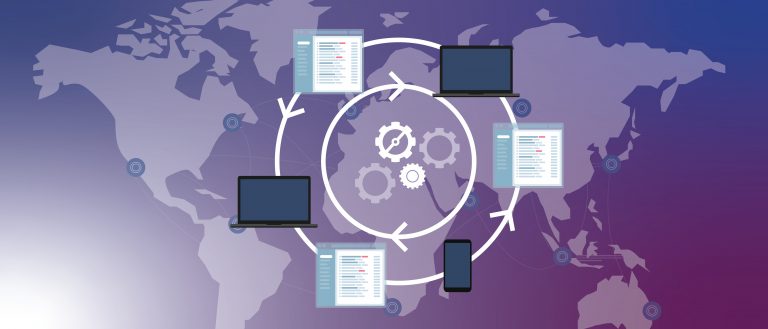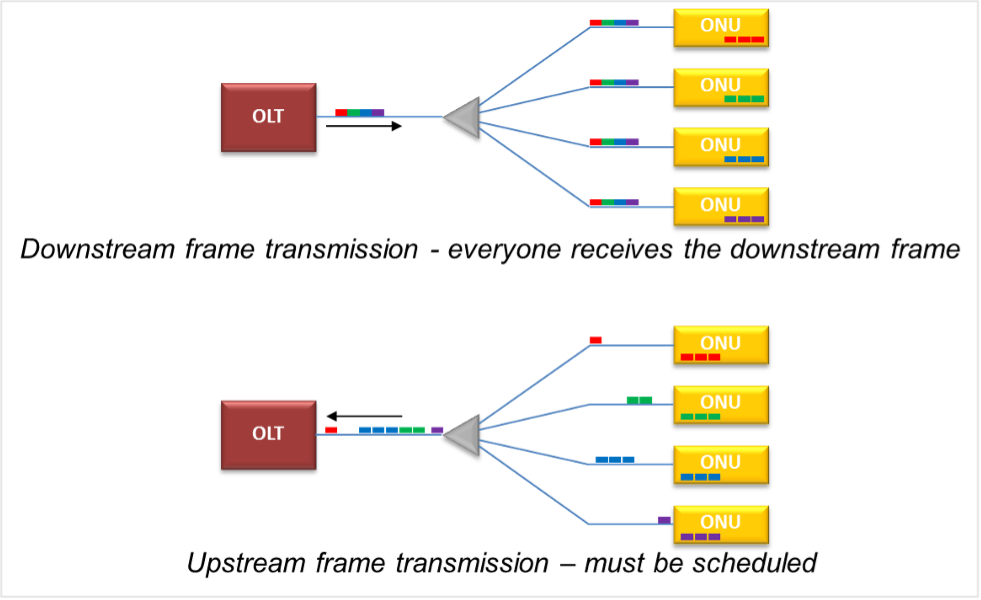Wired
Square Pegs, Round Holes and Sandboxes: Working Together for PON Interoperability

Key Points
- Establishing robust interoperability standards for emerging passive optical network (PON) technologies is critical for the broadband industry.
- The Broadband Forum (BBF) provides detailed guidelines and test plans to ensure reliable and consistent interoperability in various network scenarios.
- In partnership with BBF, CableLabs will host a Plugfest event in October to address real-world PON interoperability challenges.
In the world of passive optical networks (PON), achieving seamless interoperability has been a long-standing challenge, leaving operators trying to fit square pegs into round holes. This legacy is largely due to the intentional flexibility in PON standards, designed to foster innovation by avoiding overly prescriptive implementations. However, this flexibility often leaves too much room for interpretation, leading to interoperability issues.
In the PON world, standards like IEEE 802.3, ITU-T G.9807.1 and ITU-T G.9804.3 define operation at the physical layer and data link layer. Similarly, CableLabs’ DOCSIS®️ Provisioning of EPON (DPoE) specifications, IEEE 1904.1 and ITU-T G.988 define operations in the optical network unit (ONU) management layer.
These standards are the starting point for interoperability at these layers. However, the absence of industry cooperation to converge on common interpretations and use cases leads to complex and vendor-specific integrations that add cost to business operations and increase time to market for new products.
DPoE took the specification effort a step further by establishing a certification program that rigorously tests interoperability between ONUs and optical line terminals (OLTs). This program set a precedent, proving that clear, detailed specifications combined with collaborative industry efforts can result in high levels of interoperability across different vendors' PON equipment. The lessons learned from DPoE offer a valuable roadmap for advancing interoperability in the broader PON landscape.
While DPoE's success showcases what is possible, the rapid deployment of XGS-PON — now on the way to being the most widely adopted PON technology globally — underscores that significant challenges remain. With new technologies like 25GS-PON and 50G-PON emerging, the need for robust, consistent interoperability is more pressing than ever.
BBF Test Plans Support Certification Program
The Broadband Forum (BBF) has been instrumental in bridging the gaps left by broad ITU-T PON specifications. Through detailed guidelines and comprehensive test plans, BBF plays a crucial role in driving the industry toward more reliable and consistent interoperability. These test plans cover a wide range of scenarios, including various traffic types, fault conditions and different configurations.
The result of these efforts is the BBF's TR-255 "GPON Interoperability Test Plan," TR-309 "PON TC Layer Interoperability Test Plan" and TP-247 "G-PON & XG-PON & XGS-PON ONU Conformance Test Plan." These specifications are the foundation of the BBF.247 Certification Program.
As part of the BBF.247 Certification Program, vendors submit their equipment to an independent testing laboratory to be tested according to these specifications.
Well over 150 ONUs are certified under the BBF.247 Certification Program. Still, operators experience interoperability challenges. In addition, new technologies like 25GS-PON and 50G-PON are being introduced to the market and have not yet been tested in the BBF.247 Certification Program.
October Plugfest to Help Pave Road to Greater PON Interoperability
To resolve these real-world interoperability concerns and to inform further development of the certification program, it is necessary for the industry to come together in a sandbox environment to test interoperability outside of a formal certification program.
Recognizing the need for hands-on collaboration, the Broadband Forum has reinitiated its PON Plugfest series — an essential platform for the industry to tackle real-world interoperability issues head-on. CableLabs and BBF will host a Plugfest event Oct. 28–Nov. 1 at the CableLabs headquarters in Louisville, Colorado.
The event will provide a collaborative environment where OLT, ONU and test equipment vendors can rigorously test and improve their solutions. Vendors will be paired together for a series of tests to evaluate the level of interoperability between their devices. In turn, the Plugfest will help the industry chart the next phase of interoperability specification development.
While the state of interoperability between OLTs and ONUs has improved, there is still work to be done. The upcoming Broadband Forum PON Plugfest at CableLabs will be a critical opportunity to drive this progress forward.
As the industry gathers at the Broadband Forum PON Plugfest, the path forward is clear: By doubling down on collaboration and embracing certification programs like BBF.247, we can overcome the interoperability hurdles that remain. Together, we will unlock the full potential of PON technologies, ensuring that high-speed, symmetrical broadband reaches every corner of the globe.
Fiber
10G-EPON vs. XGS-PON: Are They Really All That Different?
The U.S. government is investing billions of dollars in broadband infrastructure. That funding will predominantly be used to deploy fiber-to-the-premises (FTTP) networks using passive optical network (PON) technology. Most U.S. broadband providers are focused on deploying a 10G variant of PON technology, and two types are widely available in the market today: 10G-EPON and XGS-PON. The similarities between these two solutions far outnumber the differences. Most importantly, both technologies support the same peak capacities in the upstream and downstream, and both are equally capable of supporting symmetrical, multi-gigabit services to the household or business.
A Little PON Technology History
The history of PON reaches back to British Telecom research in the 1980s. The first PON standard, APON, was published in 1998 by the ITU-T. The specification for Gigabit PON (GPON) was published in 2003 and defines a PON that operates 2.5 Gbps downstream and 1.25 Gbps upstream. Following closely, the IEEE published its first PON standard, 1G-EPON, in 2004. This standard operates at 1 Gbps downstream and 1 Gbps upstream and was the most widely deployed PON standard until the mid-2010s.
In 2010, the IEEE became the first to publish a 10G PON standard, officially named 10G-EPON, that operates at 10 Gbps downstream and 10 Gbps upstream. Network operators began deploying 10G-EPON as early as 2012, and it is still being widely deployed today. In 2016, six years after the 10G-EPON standard was published, the ITU-T published XGS-PON, which is also capable of symmetrical 10 Gbps operation. Operators that aligned with ITU-T began deploying XGS-PON in approximately 2018.
Digging Into the Details
PON, including 10G-EPON and XGS-PON, is a system for transmitting data over a shared fiber-optic point-to-multipoint network. At the root of this network is the Optical Line Terminal (OLT). From the OLT, a single fiber extends to a splitter, which joins this single fiber to multiple fibers that extend toward the end-user. Splitters can be cascaded to create an optical network that ultimately connects to a network terminal at the customer premises. This terminal is the Optical Network Unit (ONU). This device might also be referred to as an Optical Network Terminal (ONT), which is functionally the same as an ONU.
In both 10G-EPON and XGS-PON, a scheme called Time Division Multiple Access (TDMA) is used to share the fiber’s upstream resource. In this scheme, each user (the ONU at the user’s premises) is granted a share of time during which they are allowed to transmit data. At all other times, the user is “silent” while other users transmit data.
The downstream resource has only one transmitter: the OLT. By nature of the optical splitting topology, all users receive all data that is transmitted downstream. Each ONU is expected to ignore data that is not addressed to it, but both 10G-EPON and XGS-PON take the extra step of encrypting traffic to prevent nefarious actors from accessing other users’ data.

Frame Transmission by Traffic Direction
PON Similarities
Both 10G-EPON and XGS-PON use error correction schemes to achieve a wide split ratio and 10 Gbps transmission over long distances (approximately 20km). Error correction works by sending additional data, called parity, on top of the user’s data as it is being transmitted. This extra data is one form of overhead that consumes a portion of the total available capacity of the PON. Overhead results in a reduction of the usable capacity for both 10G-EPON and XGS-PON. In the end, the usable capacity for 10G-EPON and XGS-PON is approximately 8.8 Gbps.
Both standards require a minimum split ratio that supports 64 users (1:64). Split ratio can be difficult to understand because it’s a value that is determined by the operator’s network design criteria and the specific optical transceivers chosen by the operator. Some will point out that XGS-PON requires a minimum 1:256 split ratio, but this is only a recommendation and is not a requirement. Neither 10G-EPON nor XGS-PON places a maximum on the split ratio, and both standards define multiple options for the optical transceiver performance. XGS-PON and 10G-EPON are both very flexible and the operator is free to design the network to fit its specific needs including split ratios that exceed 1:64.
The native frame format used by 10G-EPON is Ethernet, which is used to carry the Internet Protocol in the vast majority of networks. It seems obvious that 10G-EPON would be capable of carrying user data in Ethernet frames, and indeed it is. Although XGS-PON’s native framing is not Ethernet, XGS-PON is equally capable of carrying users’ data in Ethernet frames and does so with a trivial amount of additional overhead compared with 10G-EPON.
Considering all these similarities, we might ask, “What’s the difference between 10G-EPON and XGS-PON?” For an engineer, it is easy to dig in and find that there are many differences between these two PON standards. However, in the end, an operator chooses one over the other based on two major factors: the network’s legacy and support for the standard in the backend systems.
PON isn’t a new technology; it has been deployed around the globe for over 20 years. The technology has a legacy of poor interoperability over that time, starting with ITU-T PON. Poor interoperability means that an ONU from one vendor will not function correctly when connected to an OLT from another vendor, so both must be sourced from the same vendor. Similarly, systems based on ITU-T PON typically have vendor-specific interfaces to the operator’s network management and provisioning systems. Industry bodies like the Broadband Forum are taking steps to improve interoperability, but this history of poor interoperability is difficult to shake off. If an operator has an existing PON network based on ITU-T standards, then that operator is most likely to adopt XGS-PON.
The DOCSIS® Provisioning of EPON (DPoE) solution from CableLabs is a series of specifications that define interoperability between OLT and ONU and interoperability with cable operators’ network management and provisioning systems. Further, CableLabs created a DPoE certification program that makes sure ONUs and OLTs conform to the specifications and are interoperable among vendors. These factors are the reason some cable operators still prefer 10G-EPON over XGS-PON.
| Factor | XGS-PON | 10G-EPON |
| History | Ratified in 2016 | Ratified in 2010 |
| Maximum Distance | 20km | 20km |
| Split Ratio | At least 1:64 | At least 1:64 |
| Usable Data Rate | Approx. 8.8 Gbps | Approx. 8.8 Gbps |
| OLT/ONU Interoperability | Low but improving | High |
| Transports Ethernet and IP | Yes | Yes |
Comparison of XGS-PON vs. 10G-EPON
Future-Proof PON Technology
The similarities between 10G-EPON and XGS-PON far outnumber the differences. Both technologies support the same usable capacity in the upstream and downstream and therefore are equally capable of supporting symmetrical, multi-gigabit services to the household or business. Market data demonstrates that the cost of 10G-EPON and XGS-PON devices is comparable. This is the case because 10G-EPON and XGS-PON ONUs are built using the same underlying hardware components, including identical silicon, and the software determines the mode of operation.
Today, the majority of PON deployments are of the 10 Gbps variety — either 10G-EPON or XGS-PON. Marketeers are trying to cast one or the other of these as better, but in reality, these two technologies are equal in their ability to meet and exceed broadband service requirements today and well into the future.




